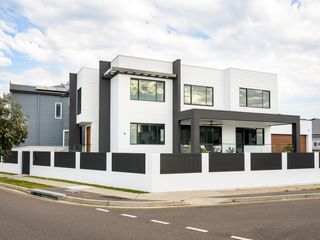
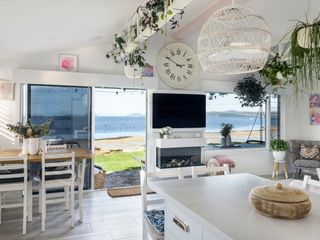
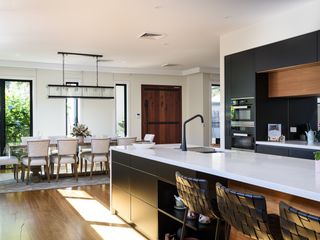
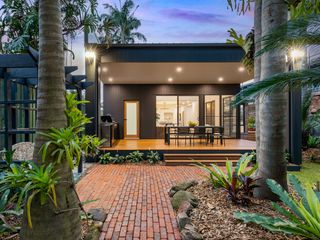
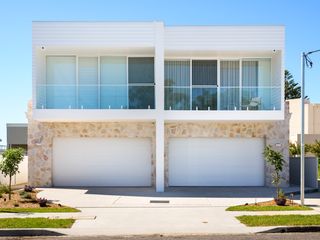


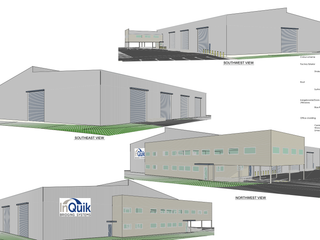
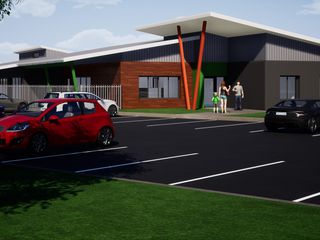
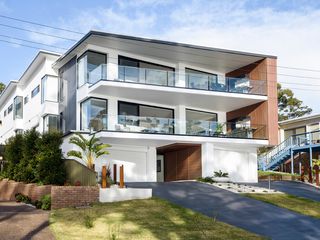
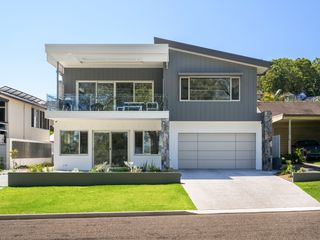

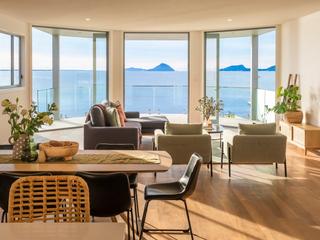

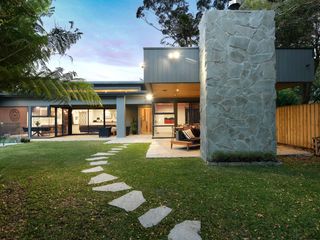

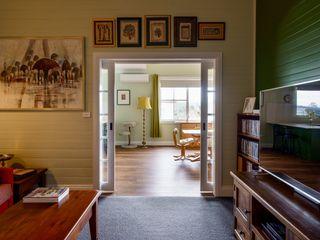


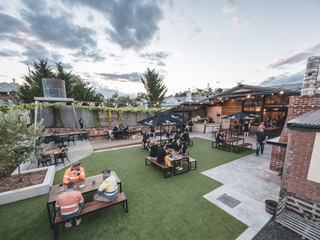

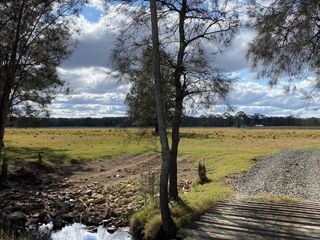


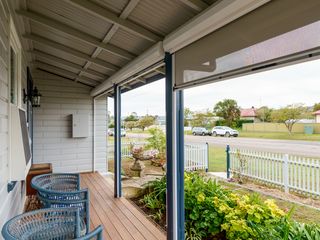


Crucial considerations for building in a flood zone in NSW
Building a home in a flood-prone area in New South Wales (NSW) requires meticulous planning and design to ensure safety, compliance, and resilience. Understanding flood zones, identifying major flood-prone regions, and implementing appropriate design strategies are crucial steps in this process.
What is considered a flood zone?
A flood zone (i.e. a flood-prone area) refers to land susceptible to flooding from rivers, creeks, estuaries, or ocean inundation during storm events. In NSW, flood zones are identified through flood mapping and studies conducted by local councils and relevant authorities. These areas are categorised based on the likelihood of flooding, often expressed as a percentage indicating the annual chance of occurrence.
For instance, a 1% Annual Exceedance Probability (AEP) flood has a 1 in 100 chance of occurring in any given year.
The guidelines for development in flood-prone areas vary by local council, with regulations that specify building requirements, land use controls, and safety measures. Understanding your land's flood level is critical when designing and planning a new build or modifying an existing home in a flood-prone area.
What are the biggest flood zones in NSW?

NSW has several regions recognised for their significant flood risk. Some of the most flood-prone areas include:
- Northern Rivers Region–Including towns like Lismore and Ballina, this area frequently experiences flooding due to its river systems and coastal proximity. Recent floods in this region have caused extensive damage to homes and infrastructure.
- Hawkesbury-Nepean Valley–This region in Western Sydney has a long history of severe floods, impacting communities such as Richmond and Windsor. The valley's natural topography leads to slow drainage, increasing flood severity.
- Hunter Region–Areas around Newcastle and Maitland have experienced significant flooding events, affecting both urban and rural communities.
- South Coast and Illawarra—Areas along the South Coast also face flood risk due to coastal erosion, river overflow, and intense rain events.
If you are considering building in a flood zone in NSW, checking flood mapping resources from local councils is the first step to determining the suitability of the land.
Tips for building & designing in a flood zone
Designing a home in a flood-prone area necessitates integrating flood-proof strategies at every stage of the development process. Here are some key considerations.
#1: Site assessment & planning
Before building in a flood-prone area, determining your site’s flood risk level is essential:
- Consult Local Council Guidelines—Different councils have varying requirements for house designs in flood-prone areas. Engaging with the council early helps ensure compliance with development approval regulations.
Experienced building designers like Sorensen Design & Planning can help make council applications and approvals easy. We have close relationships with local councils across New South Wales, especially in Sydney and the Hunter, so we can quickly source information about existing flood zones and at-risk areas, ensuring your new home is designed to withstand flood conditions. - Flood Mapping—Use local council flood maps and historical flood data to assess the expected flood heights and frequency. This information guides the home’s design, placement, and necessary mitigation measures.
- Risk Assessments—Every property has unique flood risk factors, including terrain, drainage, and proximity to waterways. Consulting with flood engineers and surveyors helps develop a tailored approach to flood-resistant design.
#2: Elevated home design
Raising the home's structure above potential flood levels is one of the most effective ways to reduce water damage:
- Raise Floor Levels—NSW planning laws often require that homes be built above the flood level to minimise risk. Lifting the home’s floor level provides protection even in areas without strict regulations.
- Pier and Beam Foundations–Elevating the home on piers or stilts allows water to pass beneath it, reducing structural pressure and minimising flood damage. This approach is especially useful in high-risk flood zones.
- Fill and Landscaping–Strategically grading the land around the home can help divert water flow. However, excessive fill can alter flood patterns, potentially increasing the risk to neighbouring properties. Consultation with an engineer ensures proper implementation without unintended consequences.
#3: Durable and water-resistant building materials
Using flood-resistant materials minimises long-term damage and reduces costly repairs:
- Use Flood-Resilient Materials—Opt for materials such as polished concrete, ceramic tiles, treated timber, and water-resistant insulation, which can withstand water exposure and dry out quickly.
- Avoid Vulnerable Materials–Traditional materials like untreated timber, standard drywall, and carpeting can absorb water, leading to rot, mould, and structural weakening. Choosing water-resistant alternatives extends the home’s longevity.
- Easily Cleaned Finishes–Non-porous materials like sealed concrete, stone, or tile for flooring and lower wall sections help prevent moisture absorption and allow for easier post-flood cleaning.
#4: Utility placement and flood-proofing services
Protecting essential home systems from floodwater reduces the risk of electrical failure, contamination, and expensive repairs:
- Elevate Electrical and Plumbing Systems—To prevent damage, Position electrical panels, hot water systems, and major appliances above the expected flood level.
- Install Backflow Prevention–In the event of a flood, floodwater can push contaminated water back into plumbing systems. Installing one-way backflow valves helps prevent this, keeping drinking water and wastewater separate.
- Flood Vents—Installing engineered flood vents in lower-level walls allows water to flow through, balancing hydrostatic pressure and reducing the risk of wall collapse.
#5: Structural considerations
Flood-resistant home designs incorporate reinforced materials and drainage solutions to withstand extreme weather.
- Use Reinforced Walls–Materials such as reinforced brick, concrete, or specially treated flood-resistant plasterboard are more durable and less likely to be compromised by prolonged water exposure.
- Ensure Proper Drainage–Incorporating drainage solutions, such as French drains or sloped landscaping, prevents water accumulation around the home’s foundation.
- Flood-Proof House Design–Features such as breakaway wall panels (which detach under high water pressure) and raised living areas reduce damage and make post-flood repairs easier. Where possible, utilise lower levels for non-living spaces like garages and storage areas to minimise flood risk.
#6: Landscaping and external considerations
Thoughtful outdoor planning can help manage water flow and protect the home from excessive moisture:
- Permeable Driveways and Walkways–Porous materials such as gravel, permeable pavers, or reinforced turf allow rainwater to drain naturally instead of pooling.
- Retaining Walls and Berms–Raised landscaping elements can redirect water away from the home, helping prevent water from accumulating near entry points or foundations.
#7: Financial and insurance considerations
Planning for flood resilience involves both upfront investment and financial protection:
- Flood Insurance–Standard home insurance policies often exclude flood damage. Securing separate flood insurance provides financial protection in a major flood.
- Cost Considerations–While flood-proofing features may increase initial construction costs, they can significantly reduce long-term expenses related to repairs, insurance premiums, and property devaluation.
Connect with an experienced building designer for a flood-safe home design in NSW
Building in a flood zone in NSW requires careful planning, adherence to local guidelines for development in flood-prone areas, and flood-resilient construction techniques.
Choosing appropriate building materials, considering elevated house designs, and ensuring compliance with local council regulations allows you to create a flood-proof home for long-term durability and minimal damage in the event of a flood.
If you’re planning a new home, consulting a building designer with experience in flood-prone home design is essential. With the right approach, you can build a safe, durable, and resilient home that withstands flooding events while maintaining functionality and comfort.
Contact the team at Sorensen Design & Planning today. We collaborate with trusted local building specialists to ensure a safe, flood-resistant new home for your family, without sacrificing beauty or functionality!






